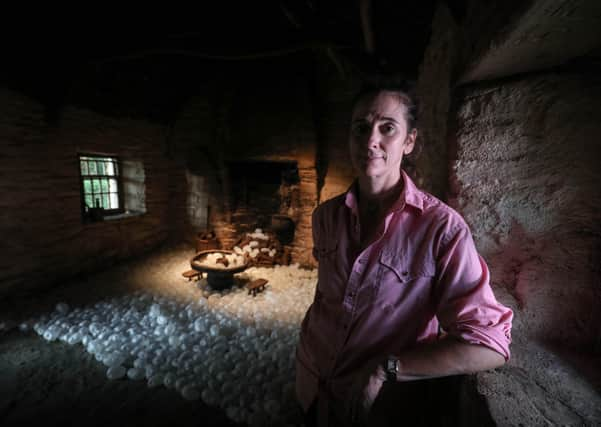Famine in crytal focus with glass potatoes exhibition


The piece, entitled 1845: Memento Mori by Paula Stokes, is a memorial dedicated to the Irish Potato Famine.
The title of the project references the year that the potato blight came to Ireland, marking the beginning of a period of mass starvation, disease, and emigration.
Advertisement
Hide AdAdvertisement
Hide AdA fitting setting for the installation, Ulster American Folk Park is the only location in Northern Ireland that will host the exhibition. The living history, open-air museum, brings to life the stories of those who emigrated from Ulster to America in the 18th and 19th centuries.
Paula, whose work is included in many collections including the National Museum of Ireland and the Irish Embassies in Brussels and Beijing, said: “As a modern-day member of the Irish Diaspora, I have reflected on my own history as an immigrant to examine historical events that have shaped the present. I hope that this installation will open a dialogue on how one can learn from the past, and that it might elicit compassionate reflection that transcends the polarizing politics of our current time.”
The piece arrived at the museum following time at both Strokestown Park House in Roscommon and Johnstown Castle Estate in Wexford.
The form of the installation differs in response to specific locations, changing shape and volume depending on light, accessibility, and exposure of each site. In previous installations it has taken the form of a cairn, or traditional stone pile. Site visits and continued research form the evolving artistic exploration of this work and each presentation is particular to each location.
Advertisement
Hide AdAdvertisement
Hide AdAt the Ulster American Folk Park, it is installed in the Single Room Cabin, which dates from the late 1700s to early 1800s and is an example of the type of dwelling occupied by many poor tenant farmers.
Liam Corry, curator of emigration at Ulster American Folk Park, said: “As a museum dedicated to telling the story of those who emigrated from Ulster to America in the 18th and 19th centuries, we are delighted to host such a tangible symbol of the Irish Potato Famine.
“At National Museums NI, we believe that learning and inspiring curiosity is a lifelong activity, and this exhibition helps us to communicate the story of emigration in a creative and engaging way to a new generation.”
*1845: Memento Mori exhibition will be on display until November 7 and is included in general admission to Ulster American Folk Park. Visitors are asked to pre-book time slots online. For further details visit nmni.com.
Comment Guidelines
National World encourages reader discussion on our stories. User feedback, insights and back-and-forth exchanges add a rich layer of context to reporting. Please review our Community Guidelines before commenting.